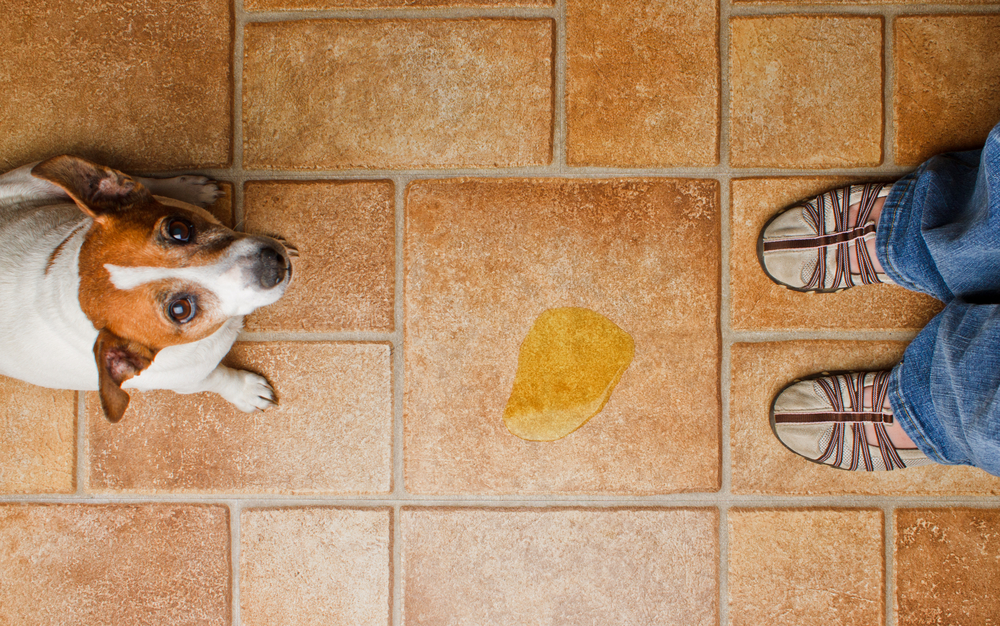Wouldn’t it be nice if dogs came with an obedience app you could program from your smartphone? Then, you could just punch in in the type of behavior you desire and not have to worry about accidents on the carpet, chewed-up shoes, or buried belongings in the backyard.
They don’t, of course. When it comes to training, it’s all on you to teach your furry family member acceptable behavior. And accidents will happen. When they do, the way you discipline your dog can have a lasting effect on his health and well-being. Here are five things you should not do if you want your dog to learn the rules quickly and still love you in the process.

5 mistakes you’re making when disciplining your dog
Nobody’s perfect, and that includes pet parents with the best intentions. We all want our pets to behave themselves — for their safety as well as for our convenience. A dog who doesn’t know house rules can disrupt family relationships as well as damage our homes and belongings.
So, what do you do when your dog breaks the rules? If you want to achieve optimal results when disciplining your dog, don’t make these five mistakes.
Physical intimidation
You might think you’re getting your dog’s attention when you spank him on the hind end or rub his nose in an accident. You are, except it’s the wrong kind of attention. Instead of correlating your punishment with his actions, your dog simply learns to fear you. And a fearful dog can develop a variety of unwanted behaviors, such as submissive urination, avoidance, and destructiveness.
Do this instead: Use the redirection method. Tell him “no” firmly, then redirect his attention to a more positive activity, such as a toy he has permission to chew or a game of fetch in the backyard.
Screaming and yelling
Again, elevating the tone of your voice might be effective in getting your dog’s attention; however, it most likely won’t be the kind of attention you want. Dogs are intuitive. They understand when their human is upset by taking cues from your tone of voice, body language, and even the smell your adrenal glands emit.
But a raised voice simply indicates you are excited, which may elevate the energy level of a stressed or excited dog in a negative way. Signs of stress include a tucked tail, panting, and raised hackles. In fact, a 2019 study found that yelling at your dog can have long-term effects on his mental health, including the development of higher cortisol levels as well as more stress-related and pessimistic behaviors.
Do this instead: Always use a calm, firm voice when reprimanding your dog. Teach him the meaning of the word “no” and use the same tone and inflection each time you use it. Use a lighter tone of voice to say “good boy,” followed by positive reinforcement such as throwing his favorite toy or scratching him behind the ears.

Ignoring problem behavior
Here’s something for you to consider: Your puppy probably won’t outgrow bad behavior, so those “cute” antics that make you giggle need to be addressed right now, especially if he is behaving in a way you won’t accept when he’s an adult. The same goes for an adult dog you adopt from a shelter. When you don’t take action right away, your dog, regardless of his age, believes his behavior is acceptable. And the longer you allow unwanted behavior to continue, the harder the behavior is to change.
Do this instead: Address the issue immediately using positive, consistent discipline. If he isn’t allowed on the furniture, don’t let him wiggle up on the sofa for a cuddle after dinner. Tell him “no” firmly, then redirect him to an area where he is allowed to lie, such as a dog bed in the living room or area carpet by your feet.
Inconsistency
Most dogs are smart, but they can get confused if you allow bad behavior one day and then ignore it the next. For example, if you feed your dog at the table at lunch, you can’t scold him for begging at your side during dinner.
Do this instead: Make sure everyone in the family agrees on what is considered acceptable behavior for your dog and is equipped to address unwanted behavior appropriately when it occurs. That means using the same words for commands as well as the same redirection techniques for each type of behavior modification.
Impatience
We already know how dogs react to angry voices and threatening body language. A recent study determined that dogs can even interpret our facial expressions. That means that every time you act impatiently, your dog is interpreting both your verbal and nonverbal cues.
Do this instead: Before you react, stop and think about what you’re trying to accomplish. Realize when you’re in a bad mood or simply angry that your dog is behaving badly. Remember that each interaction with your dog sets the stage for how he’ll react to you in the future.
If your goal is to establish a long-term relationship built on love and trust, it’s in your best interest to avoid these five common discipline mistakes and focus instead on methods with positive reinforcement.
Editors' Recommendations
- Are ‘dog years’ really 7 human years? How to calculate your dog’s age
- Looking for signs your dog has ticks? These telltale symptoms mean you have a flea or tick problem
- When do kittens start eating food? Know the facts for your fur baby’s health
- When can kittens leave their mom? Don’t separate them too early
- Pet-safe pest control: This genius technique will get rid of pesky ants



